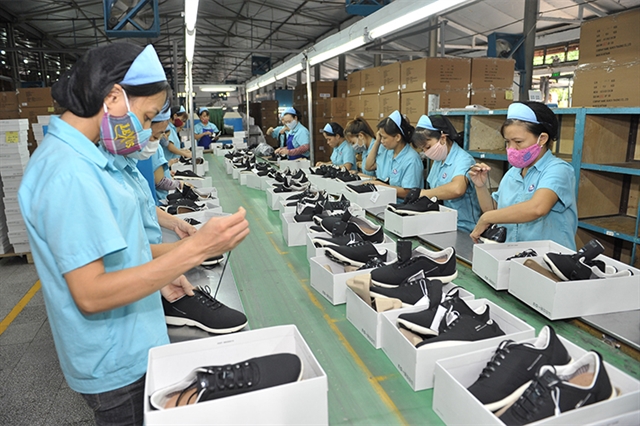 Economy
Economy


|
| At a conference in HCM City yesterday about the leather and footwear industry, experts said that companies could deepen their participation in global supply chains by improving their production. – VNS Photo Việt Dũng |
HCM CITY – Leather and footwear companies need to develop a better supporting industry for the sector and focus more on fashion and design to deepen their participation in global supply chains, experts said at a conference in HCM City yesterday.
Phan Thị Thanh Xuân, a consultant for USAID's Linkages for Small and Medium Enterprises Programme, said the Comprehensive and Progressive Agreement for Trans-Pacific Partnership (CPTPP) and the European Union–Vietnam Free Trade Agreement (EVFTA), were providing great opportunities for Việt Nam's leather and footwear industry, as the two trade agreements have reduced tariffs and will further do so in the future.
Last year, total export turnover of the industry reached US19.5 billion, about 11 per cent lower year-on-year due to the COVID-19 pandemic affecting supplies of production materials as well as exports of leather and footwear products to foreign markets.
Xuân noted that there was a rising trend of customers preferring long-lasting products over "fast fashion" goods. Businesses in the field of fashion needed to respond quickly to market demands and pay more attention to improving quality and reducing delivery time.
Nguyễn Thị Xuân Thủy, deputy director of the Industry Development Assistance Centre, said there were too few businesses in the supporting industry in Việt Nam for leather and footwear production, and their usage of automation was limited.
Production is mostly limited to Cut, Make, Trim manufacturing, and exports were mostly done via intermediaries rather than directly with importing brands, Thủy said.
There was also a lack of skilled staff in sales, marketing and merchandising who have a deep understanding of foreign markets.
"Not enough attention is being paid to the fashion industry, which is not linked with the leather and footwear industry," Thuy said.
Xuân said that for businesses to recover and develop after COVID-19, "we need to focus on improving our value in supply chains by partaking deeper inside the chains and having more stages done within Việt Nam, such as material and auxiliary material production. We have to improve our design capability and partake more in logistic chains".
As labour costs have risen over the years, to maintain production of leather and footwear, businesses need to invest more in automation and digital technology to improve productivity, make high-value products that require complex technologies, and improve production scale.
They also need to pay attention to sustainable development by ensuring environmental protection and good working conditions.
By 2025, the industry aims to satisfy most of the country's demand and maintain its position as a key export industry of the country. And by 2030, it aims to reach sustainable development through modern technologies and management systems that adhere to global standards.
The Việt Nam Leather, Footwear and Handbag Association will continue to work with State authorities on policies to help businesses recover production and exports, as COVID-19 is expected to be more controlled thanks to widespread vaccination. The association will also seek more investment in the supporting industry in an effort to increase the use of domestic materials. – VNS

|
| The leather and footwear industry suffers from a number of problems, including an underdeveloped supporting industry and design and fashion sector. – Photo |




